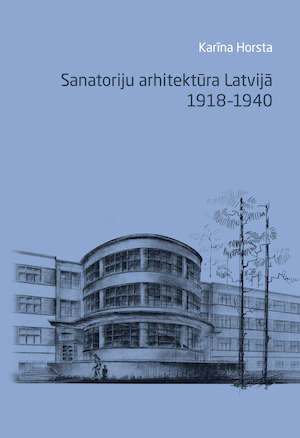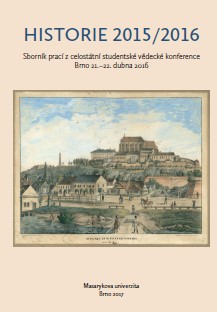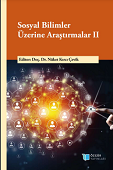
We kindly inform you that, as long as the subject affiliation of our 300.000+ articles is in progress, you might get unsufficient or no results on your third level or second level search. In this case, please broaden your search criteria.


This study is an analytical survey of sanatoriums built and arranged in the Republic of Latvia during the inter-war period, broadening the view on the healthcare architecture at that time. In Latvia's history of sanatorium architecture that began in the 1870s and lasted till the 1980s, the 1920s-30s saw the peak of the sanatorium construction type as a well-considered, stylistically consistent architectural object, organically blending in with the landscape and surrounding buildings. Leading architects of the time, like Ernests Štālbergs, Kaŗlis Bikše and Aleksandrs Klinklāvs, have greatly contributed to the development of Latvia's sanatoruium architecture. Because of specific requirements for sanatoriums, the researched objects are mostly located outside Riga - in rural areas and former resorts throughout Latvia. The book contains a summary of 7000 words and an a list of images in English.
More...
The authors of the studies included in the book interpret Sholem Asch’s works, their universal meanings and references to various cultural patterns. Sholem Asch’s prose joins biblical values, the fundaments of Judaism and Christianity, history and modern age, Jewish tradition and Polish culture.
More...
A collection of essays dedicated to the memory of a renowned Shakespeare scholar Andrzej Żurowski (1944–2013). The book is devoted to the interpretation and reception of Shakespeare’s works in Polish theatre and abroad, to theatrical practices and various dramatic devices, to translations and comparative studies, as well as to polemics and Shakespearean inspirations in broadly defined culture: in music, iconography, and translation. A diverse study of the phenomenon of the contemporary and global Shakespeare.
More...
The book is dedicated to the study of program and activity of the Polish Theosophical Society in Cieszyn Silesia during the years 1919 – 1931 (the period of its most intense, also publishing, activity). The society, for the most part of its existence, was situated on the Czechoslovakian side of the border, and formed by the local historical and cultural conditions; due to that it formulated a distinctive program of which central part was the idea of “higher spiritual culture.”
More...
Više od dvije decenije nakon završetka konflikta na prostoru bivše Jugoslavije, u crnogorskom društvu, ali i obrazovnom sistemu, i dalje postoji određeni otklon ka redovnom i detaljnom predavanju ovih tema. Iako su lekcije koje govore o periodu 1991-2001. zastupljene u našem obrazovnom sistemu, već duže od deceniju, istraživanja sprovedena kod svršenih srednjoškolaca/ki, ali i nastavnika/ca, ukazuju da se o ovim temama ili ne predaje ili da se predaju samo osnovne informacije.
More...
International Scientific Conference - Midhat Begić (1911-2011) Life and Work - Sarajevo, 27 October 2011
More...
Naučnim skupom Nobelovac Ivo Andrić – 50 godina kasnije Odjeljenje humanističkih nauka Akademije nauka i umjetnosti Bosne i Hercegovine obilježilo je pedeset godina otkako je Ivo Andrić dobio Nobelovu nagradu za književnost. Kao što znamo, ova nagrada je tom velikanu naše književnosti priskrbila međunarodni značaj, a time i samoj našoj književnosti dala vidnije mjesto u svjetskoj kulturnoj javnosti. Andrićevo djelo, koje je i do tada bilo predmet velikog interesovanja i čitateljske publike i književnokritičke misli u svim krajevima Jugoslavije, postalo je, zahvaljujući Nobelovoj nagradi i prijevodima koji su uslijedili, zanimljivo za čitatelje širom svijeta. Od tada to djelo ne prestaje privlačiti pažnju književne kritike i van zemalja bivše Jugoslavije. Njen sud davno je izrečen: Andrić je veliki pisac. Međutim, ako je ta ocjena ostajala sve vrijeme jednako neupitna, pristup njegovom djelu značajno se mijenjao u proteklim decenijama, zahvaljujući znatnim dijelom brojnim novim (modernim i postmodernim) razumijevanjima i tumačenjima same književnosti, ali i kulture uopće. Osim toga, mi više ni svijet oko sebe ne vidimo onako kako ga je vidjela Andrićeva generacija, pa su i značenja koja “izvlačimo” iz njegovog djela drukčija od onih koje je u njemu prepoznavala kritika njegovog vremena. Andrićevo djelo, kratko rečeno, nama danas ne govori isto ono što je govorilo njegovim čitateljima 60-ih i 70-ih godina prošlog vijeka. A upravo je ova pedestogodišnjica bila pravi trenutak da se književno kritička misao ponovno suoči s njegovim djelom, da mu pristupi u suglasnosti s novim iskustvima čitanja i da oslušne što nam ono danas govori, i na koji način. Bez svake sumnje danas, pedeset godina poslije dobijanja Nobelove nagrade, književno djelo Ive Andrića postalo je izazovni predmet novih čitanja, odnosno čitanja u dosluhu s novim vremenom. A želja je ANUBiH bila da tim povodom okupi stručnjake različitih profila i književnokritičkih usmjerenja, koji bi Andrićevo djelo iznova sagledali, kako u perspektivi nekih modernih učenja (naratoloških, strukturalističkih, postkolonijalnih, feminističkih) tako i u okviru promjenjenog društvenog i ideološkog konteksta u kojem se ono danas čita. Zbog te želje da se njegovo djelo u novim tumačenjima dovede u korespondenciju s duhom našeg vremena, ANUBiH je okupila desetak poznavalaca Andrićevog djela, s uvjerenjem da će oni – svaki iz svog ugla – svojim izlaganjem značajno doprinijeti suvremenom tumačenju tog djela. Sad smo u prilici da u ovom zborniku predstavimo široj javnosti sva izlaganja koja su podnesena (ili bila planirana da budu podnesena) na tom naučnom skupu, koji je održan u prostorijama ANUBiH u ponedjeljak 21. novembra 2011. godine.
More...
Proceedings are the output of the 4th International colloquium on tourism that was focused on the current issues in tourism. The major concentration is on research questions covering tourism and research topics.
More...
This volume contains best students works, bachelor or master educational program in history, which were created at universities in the Czech Republic in 2015.
More...
“Young Slavistics III” is the sixth consecutive publication in a series of annual publications of doctoral students from the Department of Slavonic Studies in Brno. The book was introduced by a study from Prof. Ivo Pospíšil called “Literary History as a Reflection of Memory and Value (with Regard to Slavonic Literatures)”. There are also ten studies by doctoral students of different Slavonic fields, in which the students focus on specific chosen topics of Slavonic literatures, languages and cultures. Their research is based on dissertations currently being prepared. Therefore, the publication is a presentation of current research topics solved in Brno by young students of Slavonic studies and at the same time they indicate the trends which this emerging generation of researchers brings to contemporary Slavonic research.
More...
Young Slavistics II is the fifth consecutive publication in a series of annual publications of Doctoral students from the Department of Slavonic Studies in Brno. The book was introduced by a study from Prof. Ivo Pospíšil called “The Problem of the Coherence and Incoherence of Slavonic Literatures”. There are also nine studies by Doctoral students of different Slavonic fields, in which the students examine the issues of context and connection in Slavonic literatures, languages and cultures through the investigation of individual examples. Their research is based on dissertations currently being prepared. Therefore, the publication is a presentation of current research topics solved in Brno by young students of Slavonic studies and at the same time they indicate the trends which this emerging generation of researchers brings to contemporary Slavonic research.
More...
The proceedings are the output of the 27th edition of the Central European Conference with subtitle (Teaching) of regional geography. The proceedings contain 19 contributions. Contributions indicate the current state of professional interest of conference participants. The contributions present current trends in geographical research by experts from the Czech Republic, Slovakia and Poland.
More...
This book focuses on togetherness within a Chinese traditional family. Step by step, the specific structure of this kind of family, and the set of social codes and regulations it uses, unfolds. Although what is being discussed is an ideal image of a family, it has to be taken into account as the model which real families follow. In eight chapters, specific cultural and social phenomena are described, being, in the realm of the living: family, matrimony, and child-rearing; in the realm of the dead: ancestor worship, funeral rites, and visions of afterlife; and finally on the spiritual level, folk religion, traditional festivities, and attempts to change one’s destiny. For better understanding, the text is supplemented with pictures.
More...
The volume of proceedings brings together papers written by student of art history from all of the university departments of art history in Czech Republic. The papers were presented within the konference Paragone II. Competition for prof. Milan Togner Prize that was organized at Art History Department of Masaryk University in 2015.
More...
Dacă primele două numere ale revistei A Treia Europă au fost consacrate unor teme importante ale culturii central- -europene, începând cu numărul dublu 3-4 am introdus un alt criteriu de organizare a cercetărilor noastre, încercând să ne concentrăm analiza asupra literaturilor țărilor din regiune. Primul subiect al acestor investigații a fost Polonia, al cărei destin plin de dramatism și de tensiuni l-am socotit paradigmatic pentru înțelegerea întregii dinamici politice și culturale a zonei. O a doua etapă din acest vast program se realizează acum prin numărul consacrat Ungariei, mai precis dialogului dintre culturile română și maghiară. în anii următori revista noastră își va orienta atenția asupra celorlalte culturi din Europa Centrală. De ce Ungaria? în primul rând, datorită literaturii sale contemporane extrem de dinamică, foarte bine reprezentată din punct de vedere al traducerilor în cele mai importante limbi de circulație internațională, o literatură care își datorează vitalitatea talentului câtorva scriitori de mare calibru, din rândul cărora se detașează tripleta (atent investigată și în paginile revistei noastre) Esterhâzy-Konrâd-Nâdas. Apoi, contactelor directe dintre reprezentanții Fundației A Treia Europă și intelectuali maghiari de marcă ai momentului, care au culminat cu vizita la Timișoara a lui Konrâd György, președintele Academiei de Arte din Berlin. Rezultatul acestei întâlniri este un volum din seria „Seminar” în curs de apariție la Editura Polirom. întâlnirile unor grupuri de intelectuali români cu o parte a elitei intelectuale maghiare în cadrul unor colocvii organizate la Centrul Cultural Român din Budapesta din inițiativa directorului său, Anamaria Pop, parteneriatele academice ale Centrului de studii comparate central- și sud-est-europene al Fundației A Treia Europă cu Universitatea Eötvös Lorând din Budapesta și Universitatea din Szeged, colaborarea intensă și fructuoasă a revistei noastre profesori de literatură maghiară și comparată de la Universitatea Babeș-Bolyai, dar și cu tinerii redactori ai revistei Korurik din Cluj au fost de natură să stimuleze conceperea și realizarea numărului de față. Nu în ultimul rând trebuie să evocăm o Timișoară a excepționalei relații româno-maghiare, exprimată de reviste trilingve (română-germană-maghiară), dar și de eminenți traducători, autentici mediatori între culturi, precum Franyo Zoltân, Aurel Buteanu, Andrei Lillin, Ion Stoia-Udrea ș.a. Mulțumirile noastre se îndreaptă spre toți cei care au fost alături de noi în acest efort : Anamaria Pop, Balâzs Imre-Jözsef, Horvath Andor, Farkas Jenö, Maria Pongrâcz-Popescu, revistele Observator cultural și Korunk. Nu în ultimul rând, mulțumim generoșilor finanțatori care au sprijinit realizarea programelor noastre de cercetare și de editare a revistei : Fundația Pro Helvetia și Fundația Culturală Europeană din Amsterdam.
More...
In the edition was published the famous Cyrillo-Methodian bibliography of Grigoriy Il’inskiy – an edition of the Bulgarian Academy of Sciences in 1934. The bibliography is accompanied by study of Sv. Nikolova about the life and activities of Gr. Il’inskiy and bibliography of the Bulgarian Cyrillo-Methodian contributions during the period 1846-1934.
More...
Civilizations exist with culture, art, science, wisdom and national spirit. The continuation of the nations is possible with the preservation and transfer of the roots that carry these dynamics. Anatolia, which has hosted many civilizations for centuries; With its history, social structure, geography and cultural texture, it has been an ancient center of togetherness and culture for centuries. In this context, we are aware that we are aware of the important values in cultural and artistic studies in revealing the richness of Anatolian geography. Although the form and expression of artistic works are different, they have served a social purpose. This book, where knowledge meets talent and different business studies come together, consists of sections prepared by artists from various activities in the field of fine arts. Seven, which will contribute to the field of fine arts with the study.
More...
Zaman insanoğlu için en önemli kavramlarından biridir. E.H. Carr’ın belirttiği gibi geçmiş ile bugün arasında kesintisiz bir iletişim mevcuttur. Dolayısıyla insan ve toplumun geçmiş ve bugün arasında maddi, manevi bağı kaçınılmazdır. Geçmişin yorumu ile günün algılanması, gelecekte olabilecekler, birbiriyle örüntü halindedir. Bu açıdan her millet kendi tarihini ve tarihi çevresini tanımak zorundadır. İlk sıralar tarih öğretimi, hükümdarların kendi idolojilerini halka benimsetme vasıtası olarak, aynı zamanda hükümdar adaylarının da eğitiminde bir disiplin aracı olarak kullanıldı. Daha sonraları klasik dillerin öğretiminde tarihten yararlanıldığı görülmektedir. 16. yüzyıldan itibaren dini metinlerin, tarihsel çerçevede daha iyi kavranabilmesi için tarih çalışmalarının kullanıldığı görülmektedir. Tarih çalışmaları, Descartes ve Bacon’un bilimde metodun altını çizmeleriyle güç buldu. Vico ve Montesquieu ile başlayan ilmi ilerleme tarih felsefesi kuramcılarının çalışmalarına yansıdı ve tarih 19. yüzyıldan itibaren bilim dalları arasında yerini aldı. Türkiye’de modern tarih çalışmalarının temeli, cumhuriyetin ilanından sonra Mustafa Kemal Atatürk tarafından atıldı. Osmanlı Devleti zamanında tarih çalışmaları, ağırlıklı olarak ümmetçi tarih anlayışı doğrultusunda hazırlanmaktaydı. Tanzimat Fermanı’nın ilanıyla birlikte Osmanlı tarihi çalışmalarına, II. Meşrutiyet’in ilanından sonra ulusçu tarih çalışmalarına ağırlık verildiği görülmektedir. Dönemin şartları gereği çalışmalar yeterince bilimsel hazırlanmamıştır. Cumhuriyetin ilanıyla birlikte dil ve tarih çalışmaları ulusal hedefler doğrultusunda hazırlanmıştır. Mustafa Kemal Atatürk, Türk tarihinin dünya medeniyetine önemli katkısının ve çok eski çağları kapsayan zengin bir geçmişi olduğunun altını çizerek, Türk tarihi ile ilgili yanlış iddiaların ispatlanması açısından objektif ve bilimsel metod uygulanarak, belgelere dayalı ulusal tarih çalışmalarına ağırlık verilmesi gerektiğini her fırsatta belirtmiştir. Cumhuriyetin ilk yılları inkılapların halka benimsetilmesine ağırlık verildiği için tarih çalışmalarına 1928 yılı itibariyle ağırlık verilmiştir. Türk Ocaklarının 6. Kurultayında “Türk Tarih Heyeti ” kurulmuştur. Atatürk’ün de içinde olduğu bu heyet toplamda sekiz toplantı gerçekleştirmiş, Türk Ocaklarının kapatılması üzerine Atatürk’ün yönergesiyle "Türk Tarihi Tetkik Cemiyeti" kurulmuştur.
More...